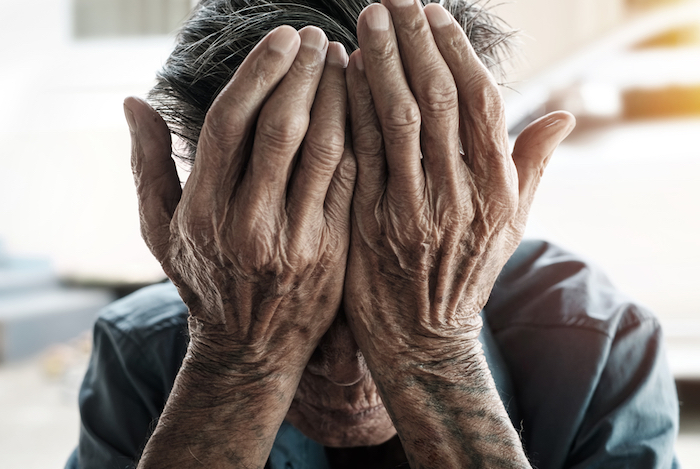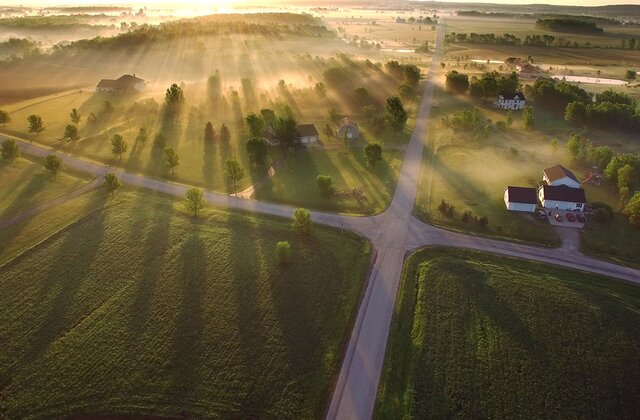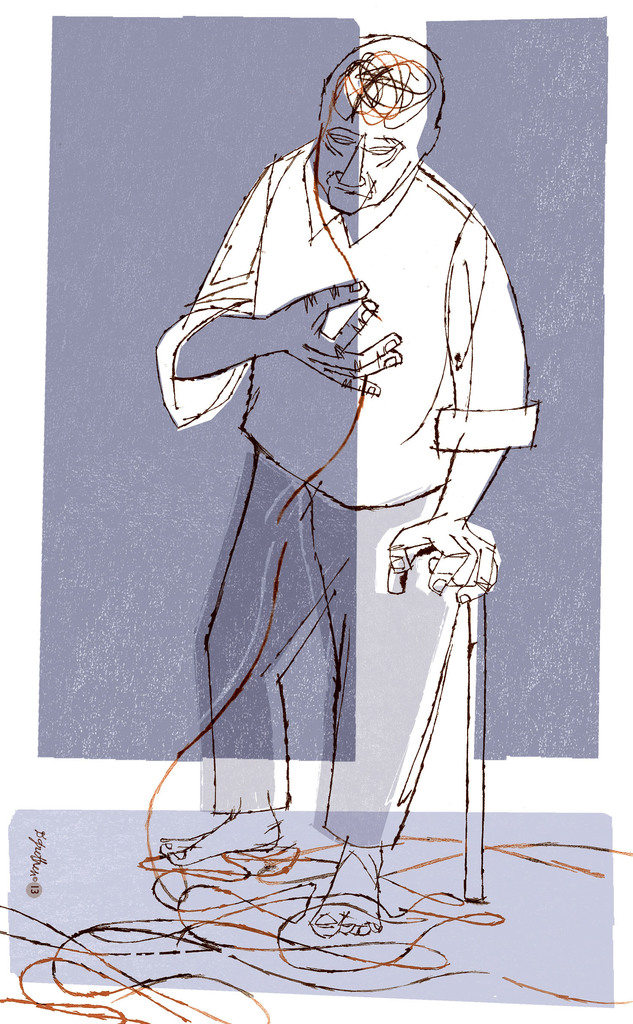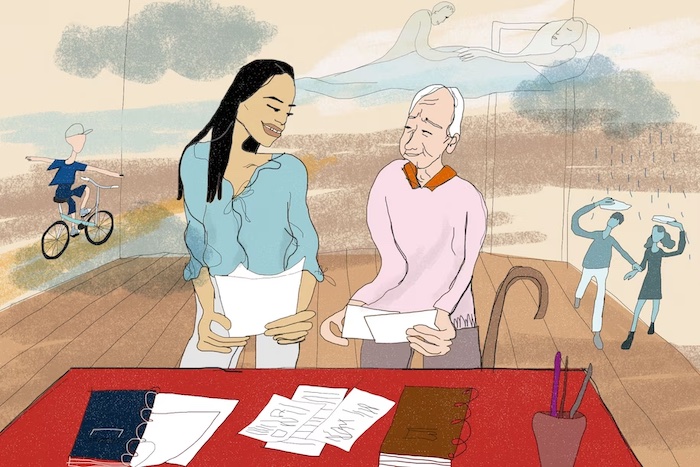— ‘I do not want to end my days as a lost soul in a nursing home’
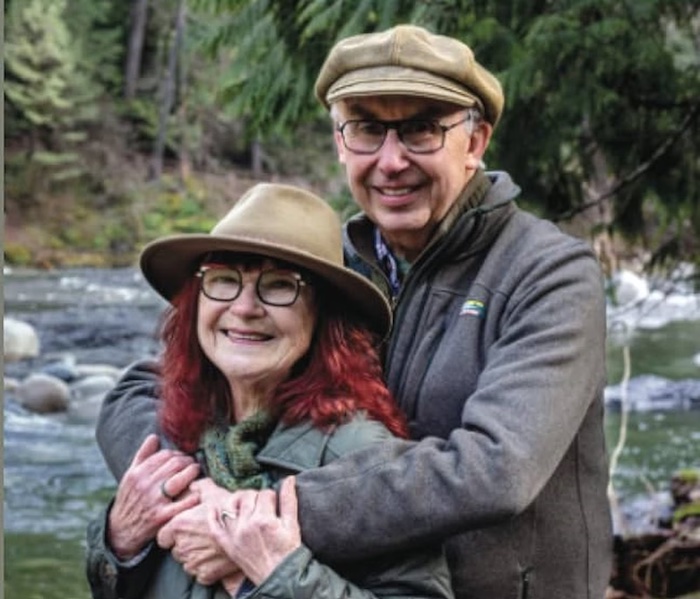
One couple’s story of four years from dementia diagnosis to assisted death
On the morning that Wayne Briese had chosen for his medically assisted death, he was out shovelling snow in front of his house at 6am, to make sure the doctor would be able to get her car in.
It was January 6th, 2022, almost four years after he had been diagnosed with Alzheimer’s disease at the age of 73. As soon as he received that news, Wayne made it clear to his wife, Jule Briese, that when he no longer had the quality of life that was acceptable to him, he wanted to avail of Medical Assistance in Dying (Maid), which was first legislated for in their home country of Canada in 2016.
“I do not want to end my days as a lost soul in a nursing home,” he told her.
At the outset, there was some doubt in their minds about whether Maid was available to somebody with dementia. Once it was clarified it could be possible, Wayne described it as “the light at the end of the tunnel”.
“I was very supportive because I know Wayne would have honoured what I wanted,” explains Jule (78), in a Dublin city hotel on a sunny September morning. She is holidaying here when we meet, her first trip to Ireland. Aware that this country is looking at the possibility of making provision for medically assisted dying, she is keen to share her experience.
The Oireachtas Committee on Assisted Dying is due to resume its public hearings today after the summer break. At the first of the committee’s five hearings so far, on June 13th last, its chairman, Independent TD Michael Healy-Rae, outlined: “The committee may recommend that changes are made to existing policy and legislation around assisted dying, but it could also recommend that no changes be made.”
The committee was set up after a Private Members’ Bill, Dying with Dignity Bill 2020, which seeks to allow for somebody with a terminal illness to request a medically assisted death, had passed the second stage in the Oireachtas.
In 2013, Marie Fleming, who was living with advanced multiple sclerosis, lost a landmark Supreme Court challenge for the right to an assisted death without putting anyone who helped her at risk of prosecution. She had claimed the ban on assisted suicide was discriminatory in that an able-bodied person may take their own life lawfully, but she could not be lawfully helped to do the same.
Wayne was always open and ready to talk. He never hid it. He wanted to be treated as Wayne, not as Wayne who had Alzheimer’s
— Jule Briese
Jule and Wayne had been married for almost 52 years at the time of his death and had been “each other’s best friends” since meeting as teachers in Ontario. For the last four years of their marriage, they comforted each other in the carrying of their individual burdens: he sensing the disease was erasing the blackboard of his life, and she the witness to its unstoppable advance. The fact that Wayne never lost his insight into what was happening “was both a blessing and a curse”, she says. He could empathise that it was hard for her too.
:quality(70)/cloudfront-eu-central-1.images.arcpublishing.com/irishtimes/CKIPYSQKWRGVDCLSLU4Z6J6HLA.JPG)
Jule’s way of working through anticipatory grief of the loss of her husband was to write. A memoir booklet, entitled In the Hot Chocolate and Decadent Cake Society (2018), captured some of her early thoughts and those first telltale signs of confusion. In October 2017, as Wayne looked for his pyjamas in the wrong cupboard instead of going to the shelf where they were always stored, “fear scrapes its finger along hollows, unsettling my insides”, she wrote. She knew they were reaching the stage where “no longer content to be ignored, this elephant trumpets for more attention”.
When the anticipated diagnosis of Alzheimer’s was confirmed three months later, at the Brain Health Centre in Vancouver, it was “still surreal”, she tells me. They initially wondered, as it was a research centre, could they be involved with some research. But there wasn’t anything for Alzheimer’s and they felt “cast-off and adrift”.
How they navigated the next four years, from diagnosis to his date with death, is a story of personal choice, stresses Jule. But she believes there’s healing power in telling stories because it gives permission to other people to share theirs, with every listener, or reader, taking out of it what is for them and passing it on. She also wants to honour Wayne’s courage and “to give voice to what he was passionate about, and that was the right of the individual to an end-of-life choice”.
The couple, she says, did not choose to avail of Alzheimer’s medications for what is an incurable and progressive condition. “Diet, exercise and making your life meaningful… that is what was important to us.”
What was also at the back of their minds was that some of the drugs mask the progression.
“You get to a point where they don’t work any more – you were here, and there you are now,” she says, demonstrating a gulf that they had no wish to cover in a sudden leap. It is not that they were anti-medication, and Wayne did take a pill for anxiety from the second year onwards, but rather, it was a matter of weighing up the benefits and side effects.
Wayne lodged documents with a lawyer straight after his diagnosis, outlining his desire for Maid and his definition of quality of life. Jule knew it would be her job to look out for the red flags that would signal stages of decline. Meanwhile, they got on with life, in which the outdoors had always played a large part. “We hiked, we camped. We weren’t overly social people; we had a small circle of friends.”
With Wayne’s permission, Jule recorded the two of them talking about issues. She devised questionnaires relevant to how he was coping with daily life, and they could use his responses to give a fuller answer to the “How are you?” opening gambit at medical check-ups. Extracts from these recordings, along with selected email exchanges with his doctor and notes from Jule’s journaling, were published earlier this year in a book, Shared Conversations – Glimpses into Alzheimer’s.
:quality(70)/cloudfront-eu-central-1.images.arcpublishing.com/irishtimes/DKJWNBS4RZGPPNUFB2BW7KJRME.jpg)
“Wayne was always open and ready to talk,” she says. “He never hid it. He wanted to be treated as Wayne, not as Wayne who had Alzheimer’s.”
In the main, friends were really supportive, but “there are those who don’t know how to cope, and they leave”.
Once the couple had established that assisted dying was a possibility for somebody with dementia, they contacted Dr Tanja Daws, who Jule had heard spoken warmly of as the doctor at the centre of somebody else’s experience of Maid. At the first meeting with the couple, Dr Daws told them it was going to be a long journey, “we are going to be together for a while”.
“And we were,” says Jule. They met her every three months after that, over nearly four years. A second, independent doctor must be involved in the assessment for Maid, so Daws referred Wayne to a geriatric psychiatrist, Dr Pawel Juralowicz, for parallel appointments. Both of them would have the chance to get to know Wayne in the lead-up to him making a formal Maid application.
A big concern for Wayne was that a time might come when he would no longer be deemed capable of giving consent, and then his choice of a medically assisted death could no longer be enabled. But a Canadian legislative amendment, Bill C-7, in March 2021, removed that worry. It allowed, in certain circumstances, for assisted dying to go ahead for an eligible patient who had agreed in advance a waiver of final consent with their doctor.
“Sometimes it’s called Audrey’s Bill,” says Jule in reference to a high-profile campaigner, Audrey Parker, who had stage-four breast cancer and had been assessed and approved for assisted dying. She had hoped to see out one more Christmas, but, afraid that pain medication would remove her ability to give final consent, she went early, choosing November 1st, 2019, for her death.
‘When I set my date for Maid I don’t want anyone to try to change my mind’. That stayed with me. It’s about Wayne
— Jule Briese
By early 2021, an escalation of Wayne’s dementia was unsettling both him and Jule. By July, he was struggling to know how the people around him fitted into his life. In a conversation recorded on July 22nd, 2021, Jule said to him: “We’ve talked about red flags and you said something like: ‘When I get to the point of not knowing who my wife is and when I get to really being in a confused state, then it’s time to think about Maid.’ Would you say that you are actually beginning to experience those things that you did not want to have to happen to you?”
“I think that is a correct observation by you,” he replies. “Is it all right to say that?”
They agreed that episodes of confusion were becoming more prolonged and that they were nearing “10 minutes to midnight”. This is a term Dr Daws used for the time at which Wayne would need to apply for a Maid assessment, to verify that he met the criteria and was fit to sign a waiver for it to go ahead without his last-minute consent, if incapable at that point.
Everybody has their own definition of quality of life, says Jule. “You had to deteriorate to a certain point, where your quality of life as you defined it was in jeopardy, and it was at that point you could set your date for Maid.”
Choosing to be formally assessed is one thing, but how do you know when to set the date? It was a question Wayne asked both of his assessors in December 2021. Jule recalls how Dr Juralowicz suggested to him that the consciousness knows when the time is right, while Dr Daws replied: “Wayne, if life is a stage, how do you want to take your final bow?”
“Within a week, Wayne said, ‘I want to have Maid after Christmas’ – that was on December 18th. I said ‘before new year’s?’ and he said ‘No, no, after new year’s.”
He set the date for January 6th, 2022, at 10am.
“Two months before he set the date, he’s in the shower and he called me, ‘Come quick’. There was his smiling face, ‘When I set my date for Maid I don’t want anyone to try to change my mind’. That stayed with me. It’s about Wayne, it’s not about me, and I think that’s really important.”
With the date set, the challenge was how would they spend the finite days left? They had envisaged they would enjoy a quiet getaway together on the west coast before Wayne said his goodbyes to relatives and friends. But, as it turned out, he had already reached a stage where he didn’t want to leave their home at Qualicum Beach on Vancouver Island.
:quality(70)/cloudfront-eu-central-1.images.arcpublishing.com/irishtimes/Q3P2A2FZFZAPFJDLMA3YG3GH2E.JPG)
So they stayed put, and Wayne made phone calls to people important in his life. The couple invited close friends over to dinner and a special friend played a clarinet concert for him.
On a lighter note, Jule recalls how a niece, Kashmir, who had spent time with them while attending university nearby, had bought a gingerbread train kit as a fun gift for Wayne that Christmas before she knew he had set a date for Maid. “She said to me, I don’t think somebody that is dying is going to want to do this. I said ‘I think you’re right and we will give it to grandchildren of a friend’.”
However, when there was a power cut one afternoon, they decided to take it out and assemble it between the three of them.
He did not want me to be the worn-out caregiver. He said to me: ‘My life is finished, my quality of life is gone, you need to live your life’
— Jule Briese
Kashmir was disgusted to discover the kit did not include icing. “She said, ‘Who on earth would do this for kids and not have icing?’ I said I have honey. It was a mess, but it was like we were all kids. It was such a priceless memory.”
Although describing themselves as “more spiritual than religious”, the couple invited a local Anglican priest to be with them on the day Wayne had chosen to die. He came at 9am and, in the course of conversation around their pellet stove, Wayne spoke of how he had been blessed in life and had no regrets.
“Then he turned around to me and said beautiful things and to Kashmir.” When Dr Daws and a nurse arrived, the couple moved into the room that overlooked the garden though double glass sliding doors and the priest gave each of them an individual blessing for their diverging paths.
In a last-minute flash of Wayne’s characteristic humour, he looked at the nurse and said: “Where have you been for the last 40 years? Finally, somebody that can put in an IV.” Then he told them: “I’m ready.”
“I held his hands and Kashmir held his feet,” says Jule. “It’s like he was on his journey and preparing to leave, we had said our goodbyes. I was there to witness his leaving.” Opera singers performing some of his favourite John Denver songs, from the album Great Voices, were playing in the background.
“He passed with love and we opened the windows so his soul could go. Yeah, it was beautiful, it was peaceful, it was the way he wanted to go.” When it was over, Jule asked to spend some time alone with him and played a song she had written for him called My Best Friend.
As medically assisted dying goes, she feels she and Wayne had the “gold star” experience. Training she had done in her 50s for conflict resolution, mediation and negotiation had equipped her to communicate with Wayne throughout the lead-up.
“If I had not taken those [courses], we would never had had those conversations. It taught me to be curious.” Out of their discussions, she has created a one-act play, Ten Minutes to Midnight. She believes it will be an educational tool, showing how to communicate with somebody with dementia, as well as giving insight to doctors.
With a number of countries, including Ireland, currently looking at legislating for assisted dying, Jule hopes that what she has to share might help in some way towards them doing it better. “You look and learn from what other countries have done.”
Jule is grateful for what Wayne’s choice meant for her. “He did not want me to be the worn-out caregiver. He said to me: ‘My life is finished, my quality of life is gone, you need to live your life’. There’s the compassion. He gave me the gift of his life,” she says, as her composure throughout the interview falters for the first time. “Therefore I have to use that.”
Complete Article ↪HERE↩!

